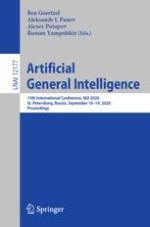2020 | OriginalPaper | Buchkapitel
Self-explaining AI as an Alternative to Interpretable AI
verfasst von : Daniel C. Elton
Erschienen in: Artificial General Intelligence
Aktivieren Sie unsere intelligente Suche, um passende Fachinhalte oder Patente zu finden.
Wählen Sie Textabschnitte aus um mit Künstlicher Intelligenz passenden Patente zu finden. powered by
Markieren Sie Textabschnitte, um KI-gestützt weitere passende Inhalte zu finden. powered by
